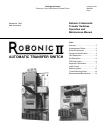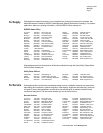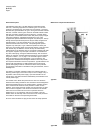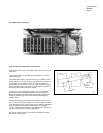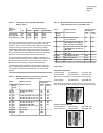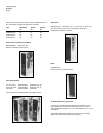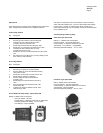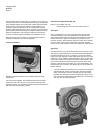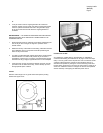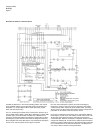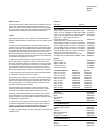
Instruction Leaflet
30-471 (E)
Page 6
Type “RO” Robonic II Automatic Transfer Switch
A complete line rated from 150 amperes through 1000 amperes at 600
volts Ac or at 250 volts Dc.
The transfer mechanism consists of the transfer motor, a gear train and
two breaker operating cams.
Spur Gear Meshing Relationship
(bottom view of top cover)
The transfer motor drives the centre gear which in turn operates the
two secondary gears. There is a projection in the secondary gears
which slides in a groove in the operating cams moving the cams from
side to side. The breaker handles are set inside two outer guides of the
cam and are also moved from side to side. There are two micro
switches (NLS, ELS) inside the breakers which are operated by the
breaker’s main contacts to disconnect the transfer motor power supply
and allow the brake to operate.
The type “RO” transfer switch has three operating positions, the normal
breaker closed and the emergency breaker open, the emergency
breaker closed and the normal breaker open or both the normal and
the emergency breakers open but never both the normal and emer-
gency breakers closed at the same time.
The type “RO” Robonic II Transfer Switch is also easy to operate
manually. Simply remove the transfer motor fuse and turn the black
handle on the front of the transfer mechanism in a counter clockwise
direction until you hear the breakers operated and the indicator is in the
desired position. There will be no interference from the solid state
control. For automatic control again, replace the transfer motor fuse
and the Robonic II transfer switch will seek the power available.
The various control components are described under the section titled
Logic Control.
Type “PRO” Robonic II Automatic Transfer Switch
Rated 1200 amperes through 3000 amperes at 600 volts Ac or 250
volts Dc.
The transfer mechanism consists of a transfer motor, a gear train and
two breaker operating cams.
Spur Gear Meshing Relationship
(bottom view of top cover)
The transfer motor drives a centre gear which in turn drives two inner
secondary gears. These two inner gears then drive larger, outer
secondary gears. There are projections from these outer secondary
gears which slide in a groove at the back of each operating cams
moving the cam up and down. The breaker handles are set inside two
outer guides on the cams, moving up and down with the cams. There
are two micro switches (NLS, ELS) inside the breakers which are
operated by the breaker’s main contacts to disconnect the transfer
motor power supply and allow the brake to operate.
The type “PRO” transfer switch has three operating positions, the normal
breaker closed and the emergency breaker open, the emergency
breaker closed and the normal breaker open or both the normal and
emergency breakers closed at the same time.
The type “PRO” Robonic II Automatic Transfer Switch is also easy to
operate manually. Simply remove the transfer motor fuse and turn the
black handle on the front of the transfer mechanism in a counter-clockwise
direction until you hear the breakers operated and the colour indicator
shows the desired position. For automatic control again, replace the
transfer motor fuse and the Robonic II Transfer switch will seek the
power available.
The various control components are described under the section titled
Logic Control
Scribe Line Scribe Line Scribe LineScribe Line



